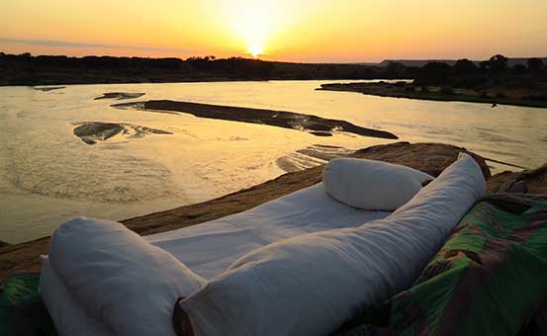
It has taken me a rather long time to write about this spot that blew my socks off.
Perhaps I selfishly held back the find, for myself, but Valentine’s Day and what many refer to as a bundle of joy, have given me the motivation to write about it.
As I typed out this piece, subtle orange curtains and immense quiet provided perfect ambience. To them, true love expressed by most adorable sparkling black eyes of my daughter staring back. She is just two days old.
Her dark, curly, hair; tiny, waving, fidgety hands; accompanied by yawns whose needs I could not meet, urged me on.
I had a substantial fraction of this feeling sitting at the edge of a cliff looking at a sunset so stunning it seemed unreal.
READ MORE
Why restoration of Nyekweri Forest is key to community survival, wildlife conservation
Two killed in wildlife attacks in Nairobi, Nyeri
Residents call for electric fence to curb human-wildlife conflict
How global recognition is driving Kenya's business tourism growth
I was at Galdessa camp, in Tsavo East.
For your information, the 68-year old Tsavo East National Park is by far the biggest of Kenya’s parks. At more than 13,700 square kilometres, it is nine times bigger than the Masai Mara National Reserve.
As dusk approached, guide Thomas, mentioned of a special spot from whence we could catch the sunset. We drove to this special spot, but we were not there yet.
We left the vehicle then walked a short distance past a bush, a boulder, and a Martial eagle perched on a tree.
I exaggerate not, but the sight ahead melted my heart. Two waiting staff standing over snow-white pillows which were immaculately laid on bare rock still warm from the day’s heat.
On their bow, there was champagne in a bucket filled with ice cubes and beyond, the most incredible colour hues, the kind that live in exquisite paintings.
It started with a shimmering calm yellow before it turned in to a bracing red that shimmered from the wide yet shallow, soundless, and slow moving river voyaging south to the Indian Ocean.
I inhaled nature’s grandeur and hoped that it would last forever. It did not. Like a strip-tease, darkness soon overwhelmed the remaining defiant rays.
The resident bloat of hippos, wallowing in the deep sections of the river, not at all muffling their yawns, bared their arresting teeth, eager for dinner.
I visited Galdessa around the same time when one of the biggest news outlets in the world termed Kenya as a hotbed of terror.
I was facing terror of different nature from what they implied.
The terror came in the form of Mugabe, a resident bull elephant who had just returned from the lusher Amboseli after six months.
This particular jumbo, infamous for his temperament, is easily identifiable by one of his broken tusks.
Galdessa Camp sits beneath the curious giant doum palms native to North Africa.
When young, the trees are a mass of bushy fronds, but as they mature and the trunks grow, they bifurcate, sometimes two or three times, to create a fascinating visual image of forked palm trees.
Mugabe was after their sumptuous, edible dates and kernels which he retrieved after shaking his bulk against the equally enormous trunks.
Jeannette, Galdessa’s manager explained that Mugabe does not bother people as long as they are off his path.
I approached Galdessa through the Manyani Gate. It sits on the southern bank of the Galana River, 15 kilometres, upstream from Luggard’s Falls, in the heart of the Tsavo East National Park.
The camp’s riverside location means that many of Tsavo’s large herds come to you: families of earth-caked elephants, hippos grazing at night, and several rare antelope species, including lesser kudu, gerenuk, and the exquisite and highly endangered hirola are sighted here.
Apart from Mugabe, the innovative chandeliers and overall décor, Galdessa offers the ultimate safari accommodation in one of East Africa’s wildest location.
If you ever visit for romance, go for the elegant, not to mention private bandas on wooden platform that boast an ensuite bathroom and private view.
Families with children are accommodated in the family rooms. Children up to four years are accommodated for free as long as they are sharing with parents. Children aged 5 to 15 years get a fifty per cent discount when sharing with parents and a 25 per cent discount in own room.
Note that because Galdessa is not fenced and animals walk through the camp, thus children have to be supervised all the time.

